KAKARIKI
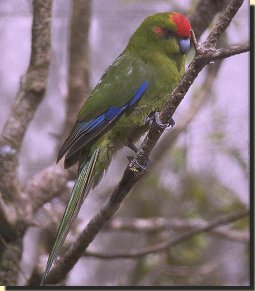
Italian: Kakariki from the red pileo
English: Red-fronted Parakeet
German: Ziegensittich
Kakariki sure the alive parakeet to which a female of ten years been born from my first brace is devout affezionato.Nel my breeding that I have sopranominato "the CRAZY one" to which they are much becoming attached although it is blind from an eye. From then they are passes many parakeets to you in my breeding but "CRAZY" the always present and every year gives me numerous descendants.
Kakariki in fact a sturdy parakeet much, little demanding in fact of feeding and lodging and that it is reproduced with extreme facilit. To my opinion the ideal parakeet for the principianti, above all from when they are appeared various mutations of piumaggio.
The two seies are similar with a nearly totally green piumaggio to part the chest, the abdomen and the sottocoda that they introduce of one tonalit yellow green. Its represented main characteristic from the forehead, the crown and the redini that they are of red brillante.Le remiganti primary ones is blue intense.
The female enough easy acknowledges from the male for the less massive spout and the head much anti that only the male has blue
Length: 27 centimeters
Distribution: New Zeland
Natural diet: flowers, nectar, yield, berries, seeds and bugs.
Feeding: mixture of seeds for small parakeets with least small sunflower and much scagliola; indispensable fruits and verdure (carrot, pear, apple, maize, etc.); pastoncino proteico for the breeding of piccoli.Personalmente I put to disposition of the riproduttori a animal food made in added seed house bubbled and frutta.Osso of small cuttlefish (or notebooks of know them mineral), grit and fresh water always to disposition.
FAMOUS GOOD: the kakariki they have the necessit physiological to make the every bath which time at least once appreciate it and to the day, in contrary case they go encounter to deplumazione and "secchezza" of the piuma.
Breeding in cattivit: By now very it stabilizes to you in cattivit, the subjects disponibli on the market are all NATO in breeding in inserted how much the kakariki in appendix of the C.I.T.E.S.
The reproduction introduces little difficolt also in little spaziosi containers type cages from broods of 120 x 50 x 50. Waves to avoid that the subjects fatten too much, it would have, for, to lodge the riproduttori outside from the riproduttivo period in widths voliere in order to allow they to greet motion.
Many confidenti are parakeets tendentially towards the man and with the time, they can succeed in to eat from the sturdy hands of the allevatore;risultano much and resistant to the diseases even if, for the habit of razzolare on the land they often go encounter to infestazioni of worms and therefore occerre to supply to regular sverminazioni.
They resist to glacial minimal temperatures without to show some sign of suffering, indeed not rare that they take a bath to next temperatures the zero.
The main reproduction begins in spring but, if it lodges to you in atmospheres heats to you and very it illuminates in order at least 14 hours the day to you, they reproduce all the year.
They place from 4 to 10 eggs, usually 8 to intervals between 24 and 48 hours and begin to incubate from according to egg.
Incubation 21 - 24 days; the small are nourished in the nest, from the female imbeccata from the male, for four - six weeks and the young people that exit from the nest are normally independent after one week - ten days from the involo.
To this point, advisable to separate them from the parents whom, also not being absolutely aggrssivi iniziaranno one new brooded.
The young people are mature sexually around to the 10 months a year, ET to which they begin to riprodursi regularly (the males some time are fecund gi to four months) but, normally, they only become good breeders to according to life year.
Nest:
They do not have no particular one necessit of nests and accept of good degree any container the present ones. Personally I use nests of base 27x27 cm and height 30 with a hole diingresso of 6 cm, in order to avoid overcrowdings in the nests (not rare in subjects of 3 devout years and to have brooded of 8-10 small.
On the bottom of the nest I arrange one layer of 2-3 cm of truciolo of wood that the female sistemer second the own requirements.
Many mutations of color of the kakariki do not exist even if currently which are being made live some varying new the FALLOW and the Lacewing.
SUGGESTED BREEDINGS by MENANDPETS.COM
No breeding to signal
if you want to know like signaling yours, contacts: marketing@inseparabile.it
MUTATION CYNNAMON
Photo by Stan Dumke 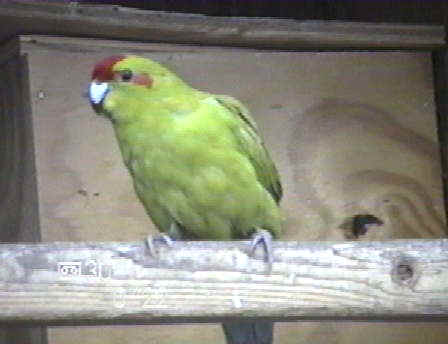
The mutation cynnamon the first mutation appeared in the orange kakariki.Consiste in a partial loss of the eu-melanine that provoke the general schiarita one of the piumaggio.Il turned out a subject diluted with the clear blue remiganti and eyes. The red one remains unchanged.
MUTATION PEZZATA
Photo by Stan Dumke
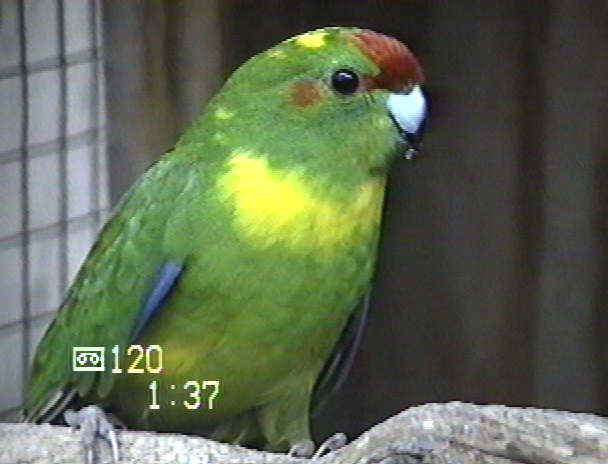 The pezzata mutation a lot striking in how much some zones of the piumaggio assumes one tonalit yellow gold. E' the precusore dellla yellow muazione in how much exists subject until 90% of the yellow piumaggio. The yellow bearers are difficultly distinguibili from the simple pezzati ones but usually the pezzatura extends also to the feet that turn out rose and grigi.Ultimamente they are appeared also of the yellow pezzati changed ones cynnamon that are the premonitory ones of the mutation "lacewing".
The pezzata mutation a lot striking in how much some zones of the piumaggio assumes one tonalit yellow gold. E' the precusore dellla yellow muazione in how much exists subject until 90% of the yellow piumaggio. The yellow bearers are difficultly distinguibili from the simple pezzati ones but usually the pezzatura extends also to the feet that turn out rose and grigi.Ultimamente they are appeared also of the yellow pezzati changed ones cynnamon that are the premonitory ones of the mutation "lacewing".
YELLOW MUTATION
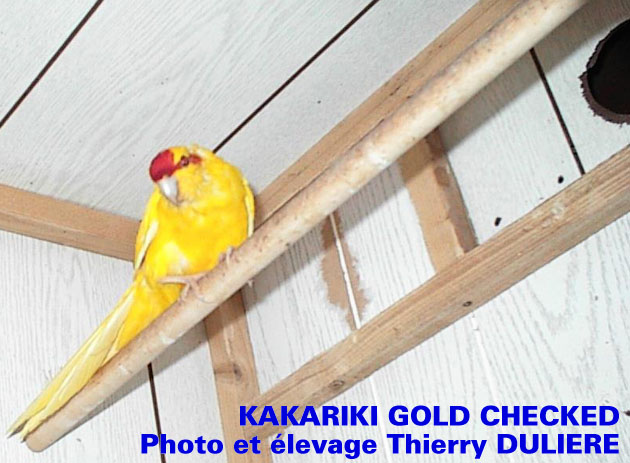 The fascinating yellow mutation probably devout and the spectacular one. The green is transformed in golden yellow, the blue in.bianco while the red parts remain inalterate.Questa not one true and own mutation, but rather an aberration capacity to the maximum extension. Draft in fact of yellow pezzato whose pezzatura replaces all the green.
The fascinating yellow mutation probably devout and the spectacular one. The green is transformed in golden yellow, the blue in.bianco while the red parts remain inalterate.Questa not one true and own mutation, but rather an aberration capacity to the maximum extension. Draft in fact of yellow pezzato whose pezzatura replaces all the green.
MUTATION LUTINA
The subjects are practically identical to the yellows but they introduce the eyes red usually steal and to the yellow less dorato.La recessiva mutation but one exists varianta in which the mutation also if to the dominant identical apprenza.
MUTATION FALLOW
Photo by Stan Dumke
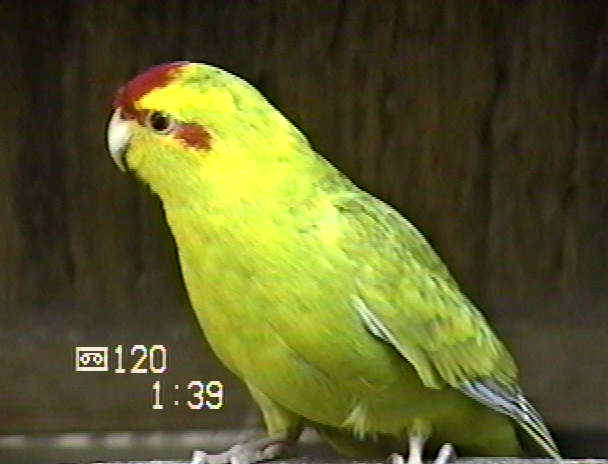
The appeared mutation fallow only recently and consists in a partial loss is of the devout eu-melanine that of the feo-melanine.Il turned out a diluted subject of cynnamon with the grey blue remiganti and the red eyes. The red one remains unchanged.
MUTATION LACEWING
The mutation lacewing devout the recent one and consists in a diluted subject devout of fallow (nearly yellow) with the gray-clear remiganti and red eyes. The red one remains unchanged.
we thank the breeding agate in order to have to us supplied this card